YouTubers are ubiquitous these days—whether they are giving makeup tips, battling it out on video games, or karaoking with celebrities in cars, they are racking up millions of views and building up a loyal following in the process.
But YouTube channels are not limited to makeup, gaming, or celebrity entertainment.
Whether you have been a Shopify Affiliate with an established audience for years, or are just starting your ecommerce blog, you should consider starting an educational YouTube channel to help grow your audience. YouTube is free and easily accessible, presents its informational in a clear visual manner, and reaches over one billion users. All of this makes YouTube an excellent platform for an affiliate to grow their established audience, or build a brand-new one.
In this post, we’ll look at four steps to creating content for a successful educational YouTube channel, from preparing your channel pre-launch, to growing an engaged, authentic, and lively community. We have also included advice from Shopify’s most YouTube-obsessed affiliates, to share how they started and grew their thriving YouTube education channels.
Step 1: Make a plan
Before clicking record, you should plan out the foundational pieces that will ground your YouTube channel. With these anchors, you will be able to speak to your audience, set expectations, and inform your audience in a consistent, informative, and exciting manner.
Define your YouTube channel’s overall goal
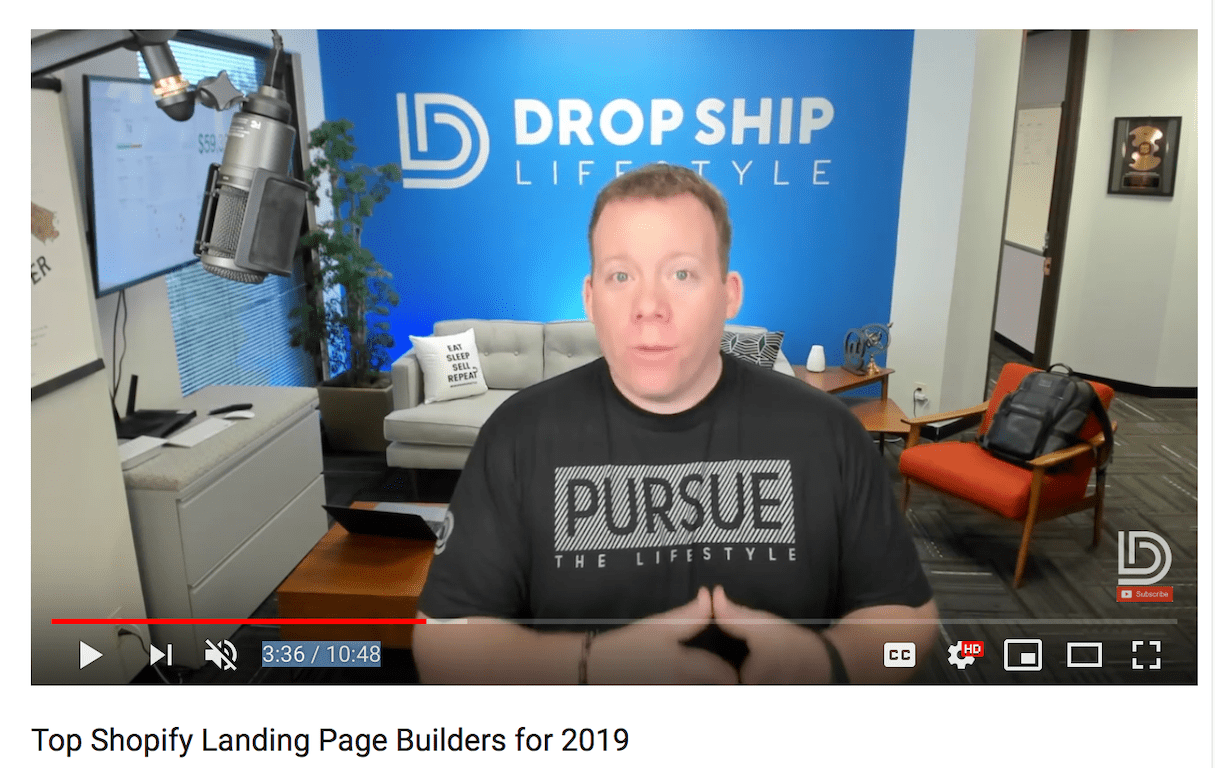
You need to understand why you are creating this channel and videos in the first place. Ask yourself what success would look like for your channel. Are you trying to help brick-and-mortar owners move their store online? Are you trying to help entrepreneurs solve fulfillment and inventory issues with Shopify? Asking these questions will help identify your goal and, from there, what niche your channel falls into.
Whatever your channel’s goal may be, make sure it is specific. Gwen Elliot, Course Producer at Shopify, says that picking a niche will help your audience quickly identify whether your channel is valuable to them.
"For ecommerce videos, you definitely want to hone your expertise and be clear about your niche. As a course producer for Shopify Academy and an avid learner, I’m always looking for potential instructors who have developed an audience teaching in their niche. I recently reached out to an expert whose channel solely focuses on Google Ads, and he may be teaching with us in the near future.”
As a course producer for Shopify Academy and an avid learner, I’m always looking for potential instructors who have developed an audience teaching in their niche. I recently reached out to an expert whose channel solely focuses on Google Ads, and he may be teaching with us in the near future.”
For ecommerce videos, you definitely want to hone your expertise and be clear about your niche.
When you have decided on your goal, write it down. Determining an achievable goal will ensure that with every video, caption, and comment, you are reinforcing and building upon your goal.
You might also like: Always Listen to Mo: How Mohamed Ali Aguel Became an Ecommerce Education Superstar.
Identify your channel’s target audience
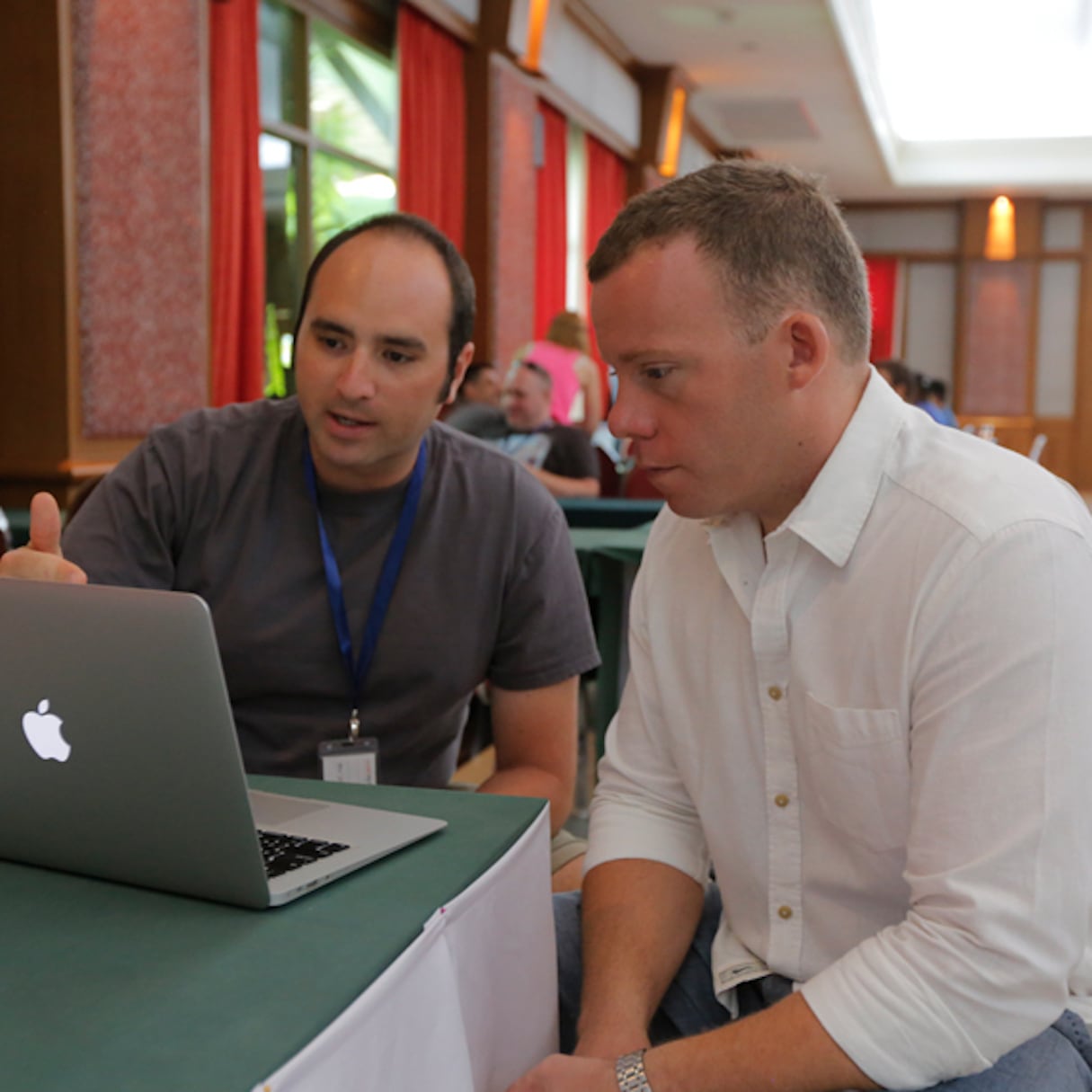
A target audience is a specific group of people who share common characteristics like age, gender, profession, interests, or profession. Target audiences are identified to narrow down your focus to a core audience, which helps make your messages more personalized and effective.
Before starting your channel, identify who your ideal target audience would be. Once you have an idea on who you want to reach, you can build more effective strategies by doing research on your target audience and figuring out the best ways of reaching out to them.
Do you want to target undergraduate students who build their Shopify stores after classes to pay for their tuition? Learn more about their blogs or public social media pages, look into their universities and colleges. Find out ways they like to learn, what time they work on their stores, and what their biggest obstacles are.
Or, do you want to target local artisans who want to sell their pieces online between craft fair seasons? Learn more about them by going to their stores in real life, reading up on craft fairs, and talking to merchants about their excitement and fear of putting their products online.
No matter who your audience is, speaking, reading, and experiencing a little about their life will allow you hone exactly who your target audience is. You will find out how they learn, what they are motivated by, and, with that, what content you should create for them. By taking the time to learn about your audience, you’ll be better suited to create content that directly speaks to their challenges.
After identifying and understanding your target audience, make sure to tailor each video, caption, comment, and image to their interests. Ask yourself check-in questions while preparing your content to ensure that the you are always creating videos that serve your target audience’s needs.
Cultivate reliability by staying consistent
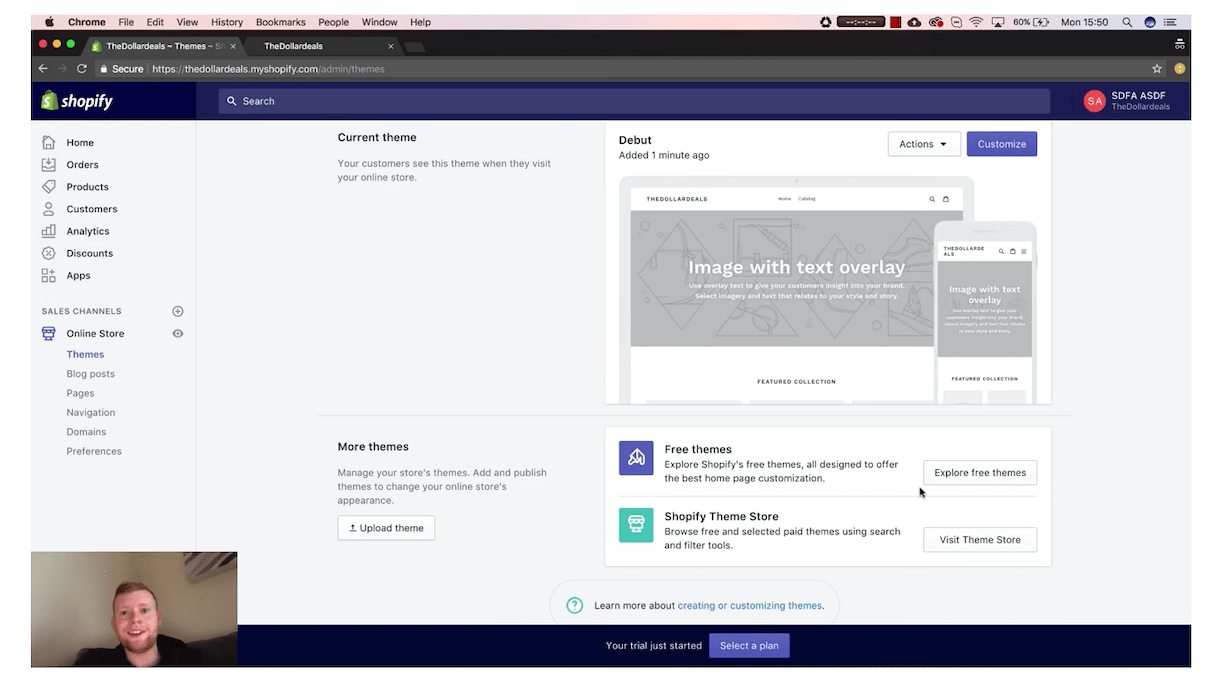
No matter your audience’s age, location, or demographic, they crave consistency when consuming content. Consistency signals to the viewers that your channel is credible, easy-to-follow, and reliable. This implicitly helps your audience trust your channel and content. Trust is paramount when you are teaching your audience new skills.
One way you create a sense of trust is to have a consistent format and cadence to your videos.
CEO and Founder of Ecom Insiders YouTube channel James Beattie, shares the importance of posting regularly.
“In the beginning, posting consistently is extremely important. Generally I try to post at minimum once a week, to keep my audience engaged and updated.”
Generally I try to post at minimum once a week, to keep my audience engaged and updated.
First, set a realistic goal of what time and day you will be releasing your videos. Of course, we would all love to be able to release one video per day, but that many not be realistic with the amount of time it takes you to write, record, edit, and upload your videos.
When you have decided on a realistic cadence for your videos, the most important rule is to stick to it. As you keep posting your videos at the same time and date, your audience will come to not only expect it, but also look forward to every new video.
A second way you can create consistency is through length of your videos.
Deciding on a specific length of your videos can be challenging. Length can be dependent on how much time it takes to communicate your content effectively, your target audience’s learning style, and the time you are able to dedicate to recording and editing.
Drop Ship Lifestyle founder Anton Kraly shares that he chose the length of his videos because of the content he had to communicate.
“I decided on ten to twenty minutes in length because that is typically how long it takes for me to answer questions with enough detail to truly help our community.”
By factoring in your audience’s preferences, and the time it takes to create quality content, you can build a standard length and schedule, to keep your work consistent and your audience engaged.
Part 2: Stand out
Earlier, we talked about the ubiquity of YouTube. There are 1.3 billion users on YouTube, and 300 hours of video are uploaded to YouTube every minute. With those daunting metrics, you need to focus on how your videos and channel will stand out.
Captivate with a compelling hook
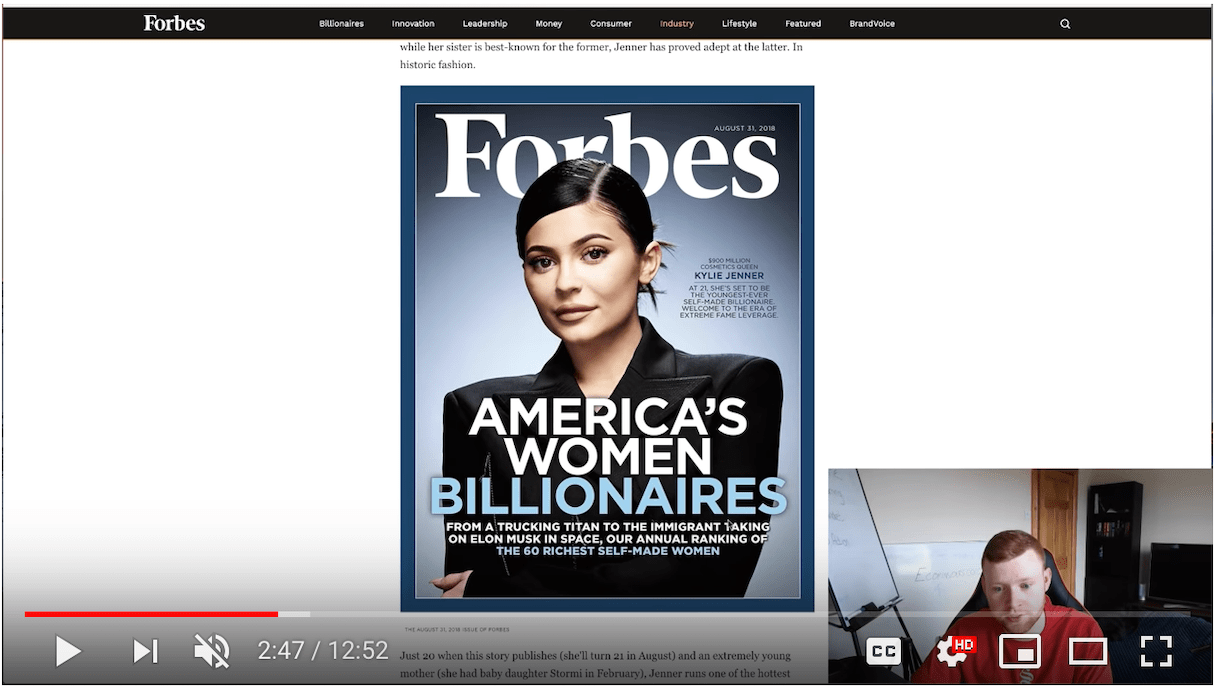
One way you can stand out is through a hook. A hook, on YouTube, is a compelling statement or visual at the beginning of a video to get the attention of your audience.
Shopify Senior Course Producer Gwen talks about how to create a great hook.
“Some studies indicate that viewers start determining trustworthiness within a tenth of a second! So you need to hook your audience within the first few seconds. To do this, share a statistic, quote, or ‘mic drop’ story that emotionally connects with your audience.”
Share a statistic, quote, or ‘mic drop’ story that emotionally connects with your audience.
Another way you can stand out is with passion. Because YouTube is a visual platform, audiences can see when a YouTuber is excited about what they are talking about. The more enthusiastic you are about your content, the more the audiences will be too.
In addition to grabbing your audience’s attention and creating compelling content, the more passionate you are about your topics, the more enjoyable it will be to work on the videos and the more likely it is you’ll stick to your publishing schedule.
Share your unique story
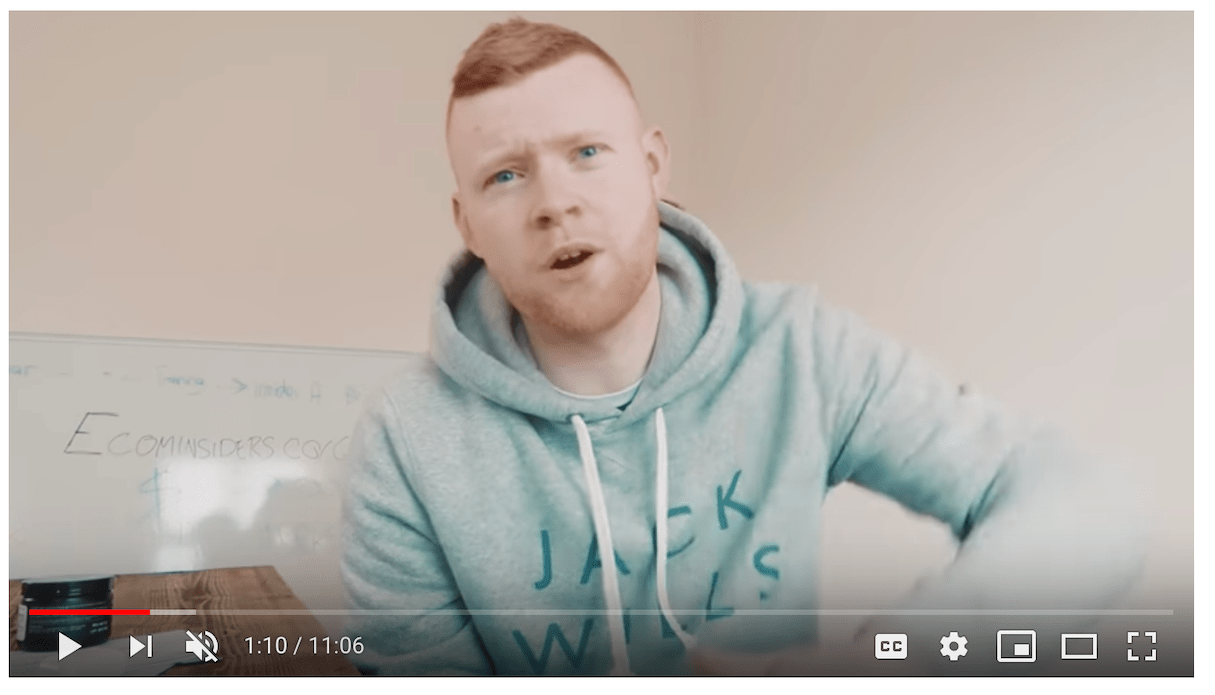
Another way to stand out among the noise of YouTube is to tell your own story.
There will be hundreds of channels that have similar topics and visuals as yours, but you are the only one with your own story. Every YouTuber has their own unique path that led them to deciding to create their channel. This path has given you to a unique perspective and way of thinking. Try to bring this different point of view to every aspect of your channel.
By sharing your unique story, your audience can relate to your experience, and will connect with you on a personal level. With that, they will have another emotional reason to watch your videos and select your channel over others.
You might also like: Affiliates 101: What is the Shopify Affiliate Program and How Can You Successfully Apply.
Part 3: Establish trust
When building an educational channel, your audience is placing trust in your content. Your audience trusts that your advice, facts, and lessons will be accurate and comprehensive enough for them to learn a new skill or solve a problem. Establishing this trust early on is vastly important. There are a couple ways to start off on the right foot.
Set realistic expectations
One way you can build this trust is setting realistic expectations with your audience.
When teaching an audience about entrepreneurship—whether it is creating your first online store, or scaling an existing business—there is no way to avoid the fact that it will be challenging. Share with your audience how and why this process will be time-consuming and difficult. Share your own setbacks and how long it took you and your peers to learn this skill.
"No matter how big the opportunity, you gotta do the work. I let my audience know that, and tell them what to expect on their journey,” James says, emphasizing the importance of setting long-term goals, rather than just shortcuts. “I'm not here to teach my audience how to make a quick buck through some quick hacks. I teach them how to create a long term business.”
No matter how big the opportunity, you gotta do the work.
By being honest and setting realistic expectations, your audience will anticipate the obstacles and practice patience, rather than giving up immediately out of frustration.
Transparency is key

Another way you can build trust with your audience is by being transparent.
When building out your channel, you may have the opportunity to partner with products or services that augment your audience’s experiences. This is exciting! However, by receiving monetary bounties or any kind of benefits from these third-party organizations, you have the responsibility to disclose these partnerships. This allows your audience to understand that you have a partnership, so they can make their own educated judgements on using the advertised product or service.
“I answer my audience the same way I would as if I was sitting with a good friend and helping them start their own business,” explains Anton. “Be honest with yourself and with your audience. If you say and do things just for views, you will eventually lose all integrity and your channel will crash and burn.”
If you say and do things just for views, you will eventually lose all integrity and your channel will crash and burn.
Taking that one step further, try to only partner with companies that you genuinely enjoy working with, and that align with your channel’s overall goal. This way you can share your own experiences using the product, and your audience will be using a product that helps them get closer to their own goal.
Ecommerce educator Mohamed Ali Aguel shares that he feels more comfortable promoting products he knows well.
“The hardest part is trying to find a product that you feel comfortable promoting. I’m promoting something that I use daily!”
Be transparent with your audience by partnering with organizations that align with your channel’s overall goal, and by letting them know when you are partnering with that organization.
Part 4: Engage with your community
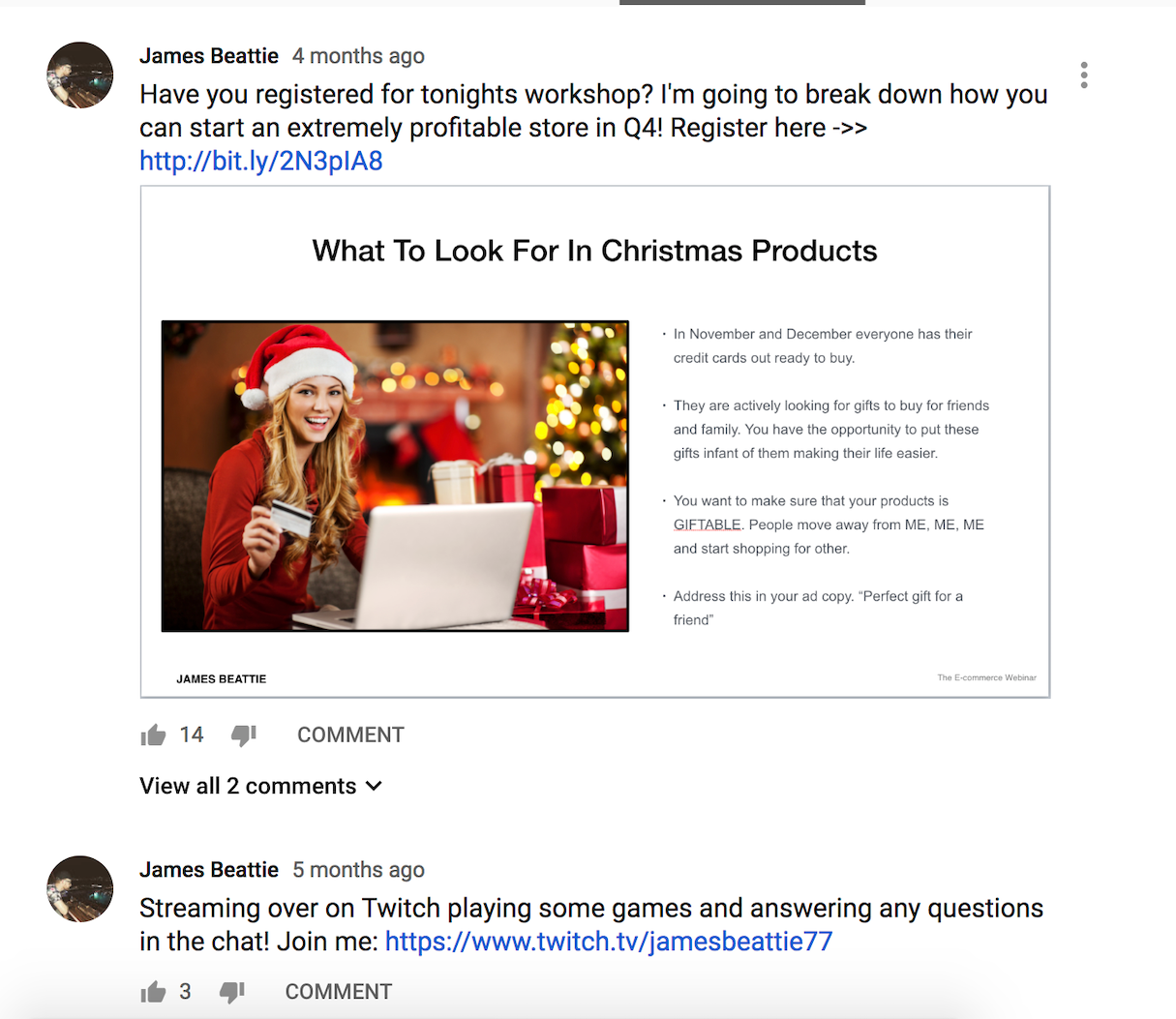
So now you have defined your channel’s target audience, goals, format, and cadence. Your content is filled with compelling hooks, authenticity, passion, and stories. You need to take your YouTube channel from just a series of videos, to a community.
One way you can increase the sense of community around your YouTube channel is to network with your fellow YouTubers. Reach out to YouTubers you admire directly, or find like-minded YouTubers by joining online forums like Shopify Community.
Connecting with peers will allow you to share best practices, avoid common mistakes, and support each other while navigating the content creator journey.
Creators in similar niches can collaborate on projects or feature each other on their channels. This not only allows you to expose viewers with similar interests to your channel, but any trust or credibility that you have built up with your audience can be strengthen by your peers’ referrals.
Anton from Drop Ship Lifestyle tries to check and reply to comments on his videos the day he posts them.
“YouTube really has a great community, and I find our comments and conversations there to be much better than on our other social channels.”
YouTube really has a great community, and I find our comments and conversations there to be much better than on our other social channels.
You can engage with your audience in the comment section of your videos, or by providing your email or social media links in your channel.
Entrepreneurial YouTuber John Beattie says that his favorite way to connect with his audience is through live streams.
“It allows me to personally engage with a lot of people in a rapid fire way. I can quickly help them identify their problems and get past whatever hurdle they’re stuck on.”

You can even meet your audience in person by facilitating a meet up or attending conferences in your channel’s niche.
“I love meeting subscribers out at marketing events,” Beattie shares. “It's cool to see people you’re making an impact on in person.”
Do not engage with your audience because you have to—instead, engage with them because it serves to better your channel and because your audience genuinely appreciates it. They will award your engagement with loyal views, referring their own friends to view your content, and giving feedback you can use in your next video.
Beatte creates his content based on his audience’s feedback in these engagements.
“I find that the best way to figure out what my audience needs is to ask them. I'll see some trends in the questions I am being asked in comments, my Facebook group, and Instagram, and I'll create a video based on that.”
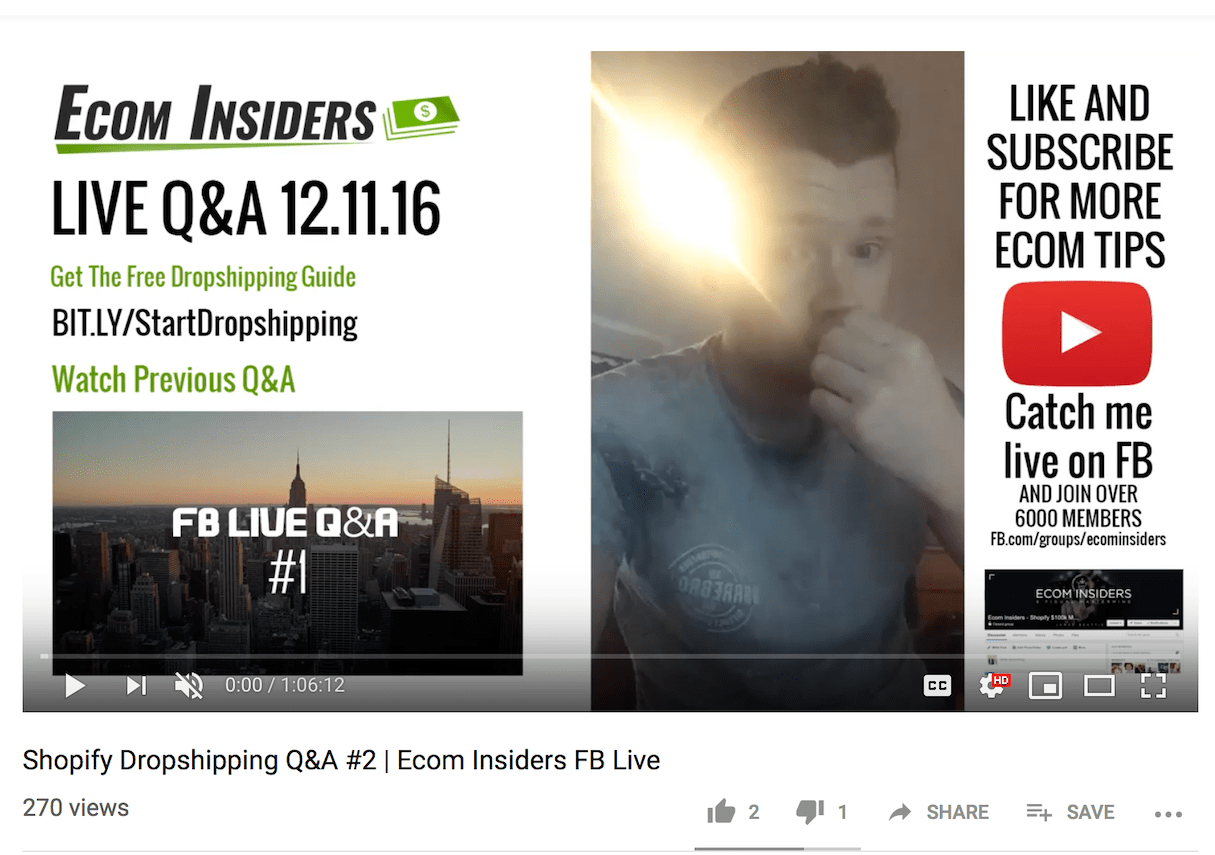
Anton celebrates his audience’s feedback as well.
“I look for common questions in our support desk, in our Facebook group, and in our YouTube comments, and I answer them in our videos. I also often end our videos by shouting out our students and their success stories.”
Engaging with your community online and in person through your channel’s comments sections or meet-ups will help guide your content and build a loyal following.
Building a thriving educational YouTube channel
With billions of users and hundreds of hours of content uploaded per minute, YouTube is a somewhat daunting but exciting opportunity to take advantage of. With the help of some Shopify Affiliates who are YouTube veterans, we've shared how you can successfully start and build an educational channel:
- Plan your channel with a specific goal and target audience, set realistic parameters around your schedule, and remain consistent in the formatting of your video
- Stand out with a captivating hook and a compelling story
- Set realistic expectations and remain transparent to build trust and loyalty among your followers
- Engage with your fellow content creators and your own audience to create a helpful and tight knit-community
By thoughtfully planning your goals and audience and creating authentic original content, you can create a valuable YouTube channel that many Shopify merchants can learn and engage with.
Have you considered starting a YouTube channel? Tell us your experience in the comments below!









